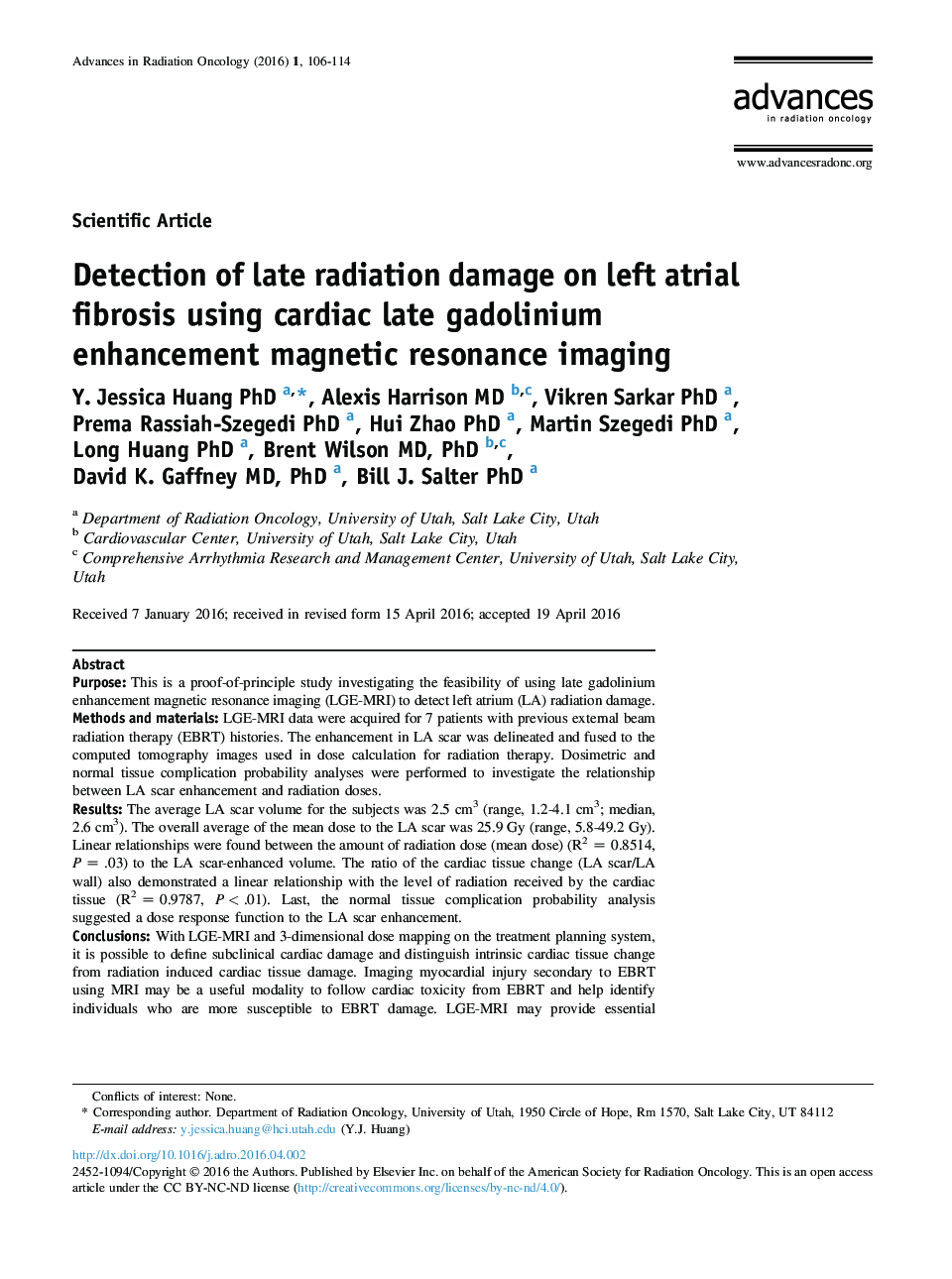| Article ID | Journal | Published Year | Pages | File Type |
|---|---|---|---|---|
| 3976395 | Advances in Radiation Oncology | 2016 | 9 Pages |
PurposeThis is a proof-of-principle study investigating the feasibility of using late gadolinium enhancement magnetic resonance imaging (LGE-MRI) to detect left atrium (LA) radiation damage.Methods and materialsLGE-MRI data were acquired for 7 patients with previous external beam radiation therapy (EBRT) histories. The enhancement in LA scar was delineated and fused to the computed tomography images used in dose calculation for radiation therapy. Dosimetric and normal tissue complication probability analyses were performed to investigate the relationship between LA scar enhancement and radiation doses.ResultsThe average LA scar volume for the subjects was 2.5 cm3 (range, 1.2-4.1 cm3; median, 2.6 cm3). The overall average of the mean dose to the LA scar was 25.9 Gy (range, 5.8-49.2 Gy). Linear relationships were found between the amount of radiation dose (mean dose) (R2 = 0.8514, P = .03) to the LA scar-enhanced volume. The ratio of the cardiac tissue change (LA scar/LA wall) also demonstrated a linear relationship with the level of radiation received by the cardiac tissue (R2 = 0.9787, P < .01). Last, the normal tissue complication probability analysis suggested a dose response function to the LA scar enhancement.ConclusionsWith LGE-MRI and 3-dimensional dose mapping on the treatment planning system, it is possible to define subclinical cardiac damage and distinguish intrinsic cardiac tissue change from radiation induced cardiac tissue damage. Imaging myocardial injury secondary to EBRT using MRI may be a useful modality to follow cardiac toxicity from EBRT and help identify individuals who are more susceptible to EBRT damage. LGE-MRI may provide essential information to identify early screening strategy for affected cancer survivors after EBRT treatment.
